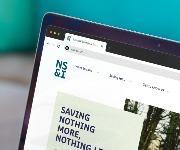Is it worth opening an ISA this year?

This year's crop of cash ISAs aren't anything to get excited about, but that doesn't necessarily mean you should ignore ISAs altogether.
It’s ISA season again, where traditionally banks and building societies raise the interest rates on their Cash ISAs in a bid to top the best buy tables. But not this year.
The 2014 ISA season has got off to an extremely slow start. In fact, some rates have even been cut as the end of the tax year approaches on 5th April.
Why have they fallen so dramatically? As we've written many times, it’s mostly due to the Bank of England’s Funding For Lending scheme. This offered banks and building societies the opportunity to borrow money at cheap rates. What this meant though was that those same banks and building societies didn’t need to borrow money from savers. So rates went down.
Here’s a stark illustration of how rates have fallen over the past 18 months.
|
Type of cash ISA |
Top rate September 2012 |
Top rate now |
|
Instant access ISA |
3.06% |
1.75% |
|
Notice ISA |
3.25% |
1.80% |
|
Five-year fixed rate ISA |
4.05% |
3.00% |
All of which begs the question: is it actually worth bothering with an ISA this year?
The arguments for opening an ISA
Yes, rates are pitiful right now but they won’t always be, and you can move your money in years to come.
The other important thing about an ISA is it’s a ‘use it or lose it’ deal. If you don’t use this tax-free allowance – which is a maximum of £5,760 in cash this year or £11,520 in stocks and shares – it’s gone forever.
If you’re a taxpayer, then rates on the likes of current accounts might look more tempting, but they are before tax, so you need to factor that into your thinking. An ISA should arguably always be your first port of call.
Here are the top rates right now:
|
Account |
Type |
Interest Rate (AER) |
Minimum deposit |
Notes |
|
Nationwide BS Flexclusive ISA |
Instant access |
1.75% |
£1 |
New subscriptions only. Must hold Nationwide current account. |
|
Stafford Railway Cash ISA |
Instant access |
1.75% |
£1 |
New subscriptions only. |
|
Britannia Select Access Cash ISA |
Instant access |
1.75% |
£500 |
Transfers and new subscriptions. Max of two withdrawals a year. |
|
Earl Shilton 90-Day Notice ISA |
Notice ISA |
1.80% |
£10 |
New subscriptions only. 90 days’ notice required for withdrawals. |
|
Britannia Fixed Rate Cash ISA |
One-year fixed rate |
1.85% |
£5,760 |
Transfers and new subscriptions. No withdrawals for a year. |
| Leeds Building Society One-Year Fixed Rate ISA | One-year fixed rate | 1.90% | £1 |
New subscriptions only. Access to 25% of capital without penalty prior to maturity if needed. |
|
National Counties BS Fixed Rate Cash ISA |
Two-year fixed rate |
2.10% |
£1,000 |
Transfers and new subscriptions. No withdrawals for two years. |
| Coventry BS Fixed-Rate ISA | Three-year fixed rate | 2.75% | £5,760 | New subscriptions only. No withdrawals for three years. |
|
Skipton BS Online Five-Year Fixed Rate ISA |
Five-year fixed rate |
3.00% |
£500 |
Transfers and new subscriptions. No withdrawals for five years. |
The arguments against opening an ISA
If you have any sort of debt, outside of a mortgage, to pay off, then you should be paying that before thinking about an ISA. The interest rate on your debt will almost certainly far outweigh what you’ll earn from any savings.
If you’re a non-taxpayer, then there is an argument for sticking to the likes of current accounts, particularly if you don’t have a lot of savings and you need some income now.
For example, Nationwide’s FlexDirect account pays 5% on balances up to £2,500 for a year.
Clydesdale and Yorkshire Banks’ Current Account Direct pay 4% on up to £3,000 until March 2015.
And Santander’s 123 current account pays 3% on balances between £3,000 and £20,000 permanently, although there’s a £2 monthly fee for the account. You can make that back though by earning cashback on your direct debit payments from the account.
The other type of ISA
There are of course stocks and shares ISAs, if you’re willing to take on more risk and look at your ISA as a longer-term investment.
Many people would argue that if you’re thinking about an ISA as a longer-term investment, you should only be thinking about stocks and shares, as they historically beat cash.
The big development for these ISAs this year is a move by the main platforms – the companies you buy your investments from – to both simplify and reduce their charges, albeit the simplication has been forced on them by the regulator.
What this does mean is it's easier to compare charges and cheaper to invest. Most companies will offer a range of options depending on your attitude to risk.
For a cheaper, simpler investment you could go for an index tracker, which does exactly what the name suggests and tracks the performance of a stock market index, for example the FTSE All-Share. When the index rises, you make money, and vice versa. Or you can choose greater risk and higher charges but potentially greater rewards by choosing to invest in a managed fund or picking your own investments in what's known as a self-select ISA.
If you're thinking about a stocks and share ISA this year, keep your eyes peeled as we'll have a series of guides on lovemoney over the next couple of weeks.
More on savings:
Most Recent
Comments
Be the first to comment
Do you want to comment on this article? You need to be signed in for this feature








